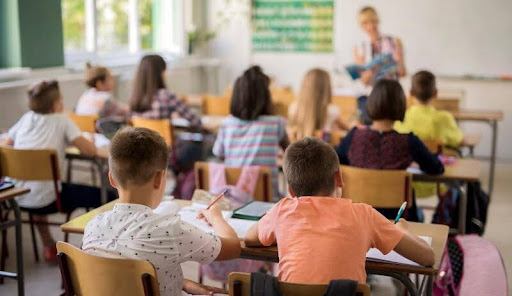Are you ready to transform your classroom into a sanctuary of trust, understanding, and connection? Look no further! In this blog post, we will reveal the secret ingredient that has the power to enhance teacher-student relationships like never before: social and emotional learning in schools. Buckle up as we dive deep into the world of SEL and explore how it can revolutionize education by fostering empathy, resilience, and authentic connections. Get ready to witness your students’ growth soar while creating an environment where everyone feels seen, heard, and valued. Let’s embark on this enlightening journey together – strengthening teacher-student relationships through Social Emotional Learning starts here!
Importance of Teacher-Student Relationships
The importance of teacher-student relationships cannot be understated. These relationships have a significant impact on the academic, social, and emotional well-being of students. A positive and strong teacher-student relationship can create a supportive learning environment where students feel valued, respected, and motivated to learn.
One of the main reasons why teacher-student relationships are essential is because they promote trust and communication between teachers and their students. When there is trust in the classroom, students feel comfortable sharing their thoughts, concerns, and questions with their teachers. This open line of communication allows for better understanding between both parties and helps to establish a sense of mutual respect.
– Empathy Building Exercises
Empathy building exercises are activities that aim to enhance the ability of individuals to understand and share the feelings of others. When it comes to teacher-student relationships, empathy is a crucial component that allows teachers to connect with their students on a deeper level. By fostering empathy in the classroom through social emotional learning (SEL) techniques, teachers can create a safe and supportive learning environment for their students.
In today’s fast-paced world, where technology often replaces face-to-face interactions, empathy has become more important than ever before. As educators, it is our responsibility to help our students develop this essential skill for their personal growth and success in life. Here are some effective empathy building exercises that you can incorporate into your teaching practice:
- Role-Play Scenarios: Role-playing is an excellent way for students to put themselves in someone else’s shoes and experience different perspectives. You can give your students hypothetical scenarios or real-life situations from the news or everyday life and ask them to act out how they would feel if they were in that situation. This exercise helps develop empathy by allowing students to see things from another person’s point of view.
- Humanizing Stereotypes: In this exercise, students break down common stereotypes associated with particular groups or communities by identifying what makes each individual unique and different from the stereotype attributed to them. It helps promote understanding and breaks down barriers between people who may come from diverse backgrounds.
– Conflict Resolution Methods
Conflict resolution is an essential aspect of building and maintaining strong relationships between teachers and students. In any classroom, conflicts are bound to arise due to differences in personalities, opinions, and perspectives. However, how these conflicts are handled can significantly impact the teacher-student relationship.
Benefits of SEL for Students and Teachers
Social emotional learning for teachers has become a popular approach in education, as it focuses on the development of essential life skills that go beyond academic knowledge. These skills include self-awareness, self-management, social awareness, relationship management, and responsible decision-making. While the primary goal of SEL is to equip students with these crucial skills, it also offers numerous benefits for both students and teachers.
In this section, we will delve into the specific benefits of SEL for students and teachers and how it can strengthen their relationships.
Benefits of SEL for Students:
- Improved Academic Performance:
One of the significant benefits of incorporating SEL into the curriculum is its positive impact on academic performance. When students have strong social-emotional skills like self-regulation and responsible decision-making, they are better able to focus in class and manage their time effectively. This leads to improved grades and overall academic success.
- Enhanced Social Skills:
SEL helps students understand themselves better by developing self-awareness and empathy towards others through social awareness. As a result, they learn to communicate more effectively with their peers, resolve conflicts peacefully, and build meaningful relationships – all essential aspects of healthy social interactions.
- Better Mental Health:
With an increased focus on mental health in recent years, SEL has emerged as an effective tool in promoting student well-being. By teaching them coping strategies like mindfulness techniques or positive thinking exercises, SEL equips students to handle challenging emotions like stress or anxiety positively.
Conclusion
In conclusion, social emotional learning is a valuable tool for strengthening teacher-student relationships. By focusing on students’ emotional well-being and teaching them important skills such as self-awareness, self-management, and relationship building, we can create a positive and supportive learning environment for all. Teachers play a crucial role in implementing these practices and fostering strong connections with their students. By incorporating social emotional learning into the curriculum, we can help students develop not only academically but also emotionally and socially. Let us strive to build meaningful and lasting relationships with our students through the power of social emotional learning.
